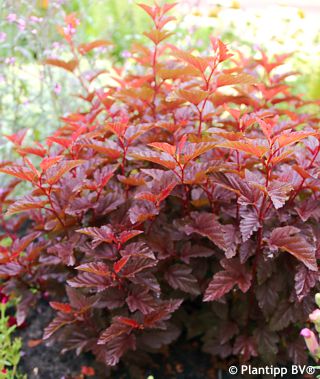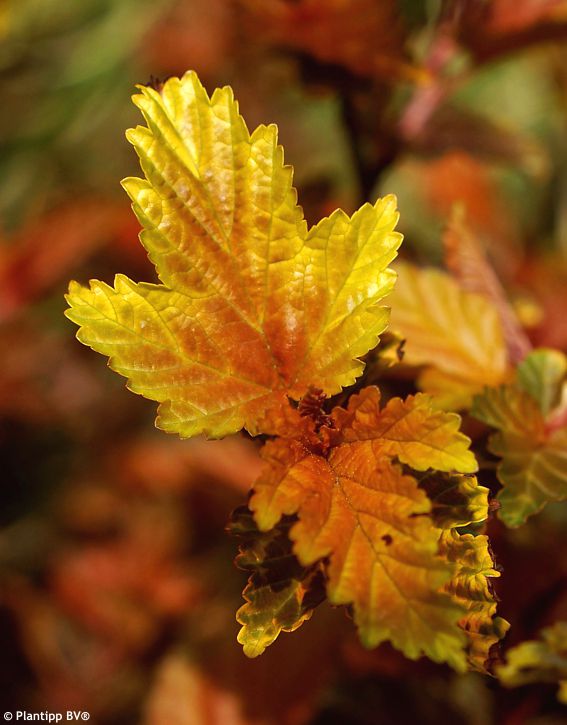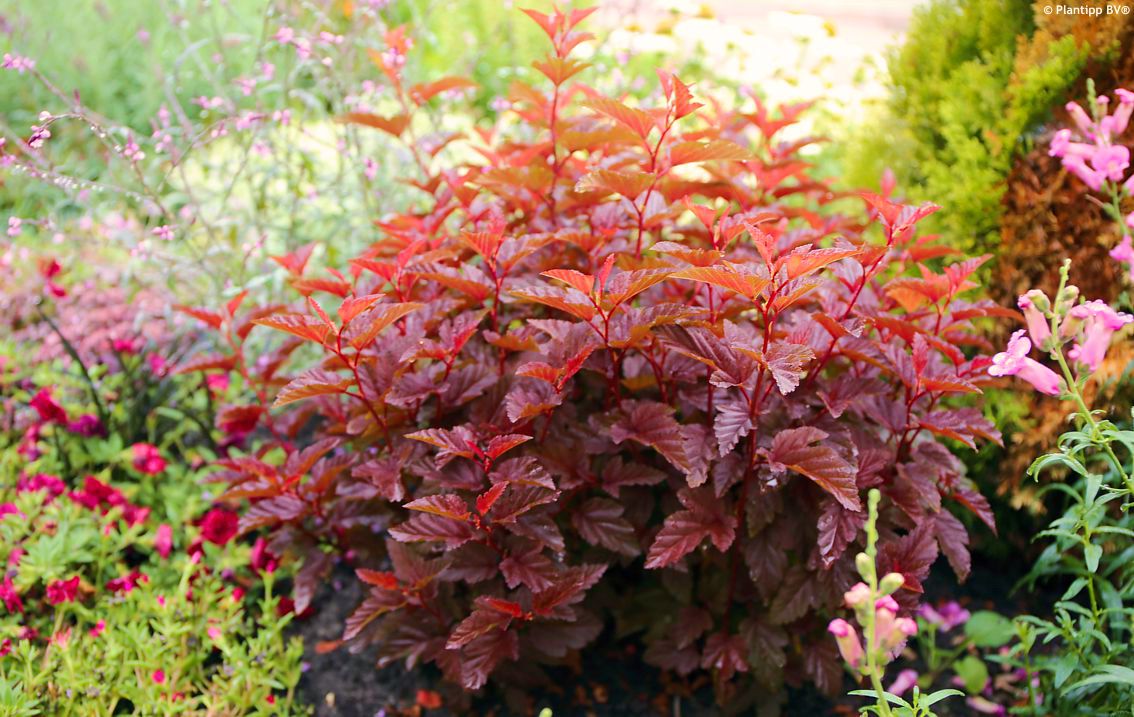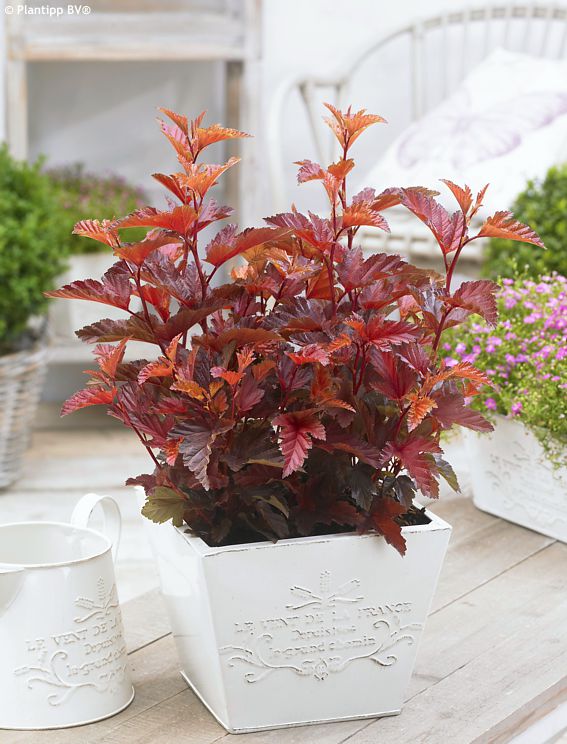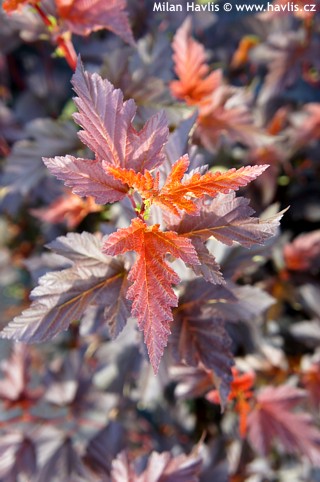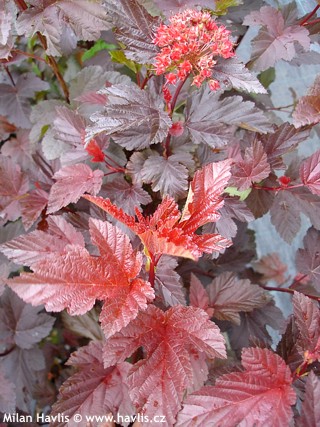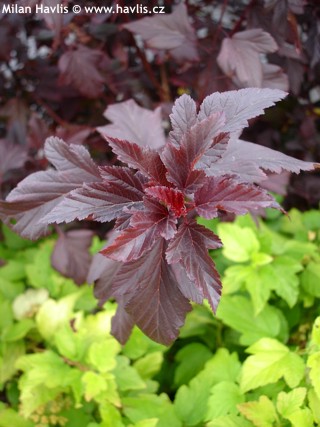Physocarpus opulifolius 'Hoogi016' LITTLE ANGEL common ninebark
Physocarpus
Ninebark is a low-maintenance, deciduous plant which is available in several varieties offering different leaf colours and habits. In the new millennium there has been a number of new selections found as natural mutations which enriched the available range of these popular plants. LITTLE ANGEL is one of them – it makes small shrubs with large leaves.
LITTLE ANGEL is a dwarf selection of ninebark producing normal-sized leaves just like the large growing varieties. They have a fantastic colour shade – a combination of warm rich red and medium burgundy red with fiery orange hues and new shoots, like little flames of a small fire. They are deciduous, 3-lobed, serrated at margins, and turn deep orange and red in autumn. In late spring appear numerous small corymbs of light red buds opening to almost white, melliferous flowers, soon followed by dark red fruit that lasts for several months. In autumn becomes visible another attractive feature which gave this plant its name ninebark: peeling bark on older stems. It looks especially attractive on a sunny winter day against a layer of fresh snow on the ground.
LITTLE ANGEL ninebark is supposed to grow only some 50 cm according to the breeder. Well, I don’t quite believe this figure but even if it grows twice as much it is still a dwarf among other ninebark giants, and can be placed in smaller beds or front yards without risk of overtaking the space. It looks very handsome in a pot, too. Dark coloured foliage contrasts well with yellow and rich green leaves of plants growing close. Thanks to slow and compact growth it is also ideal for informal, small-sized hedges.
Ninebarks are so easy to grow. They take any soil, pH and location. The root system is so sturdy it can easily grow through heavy clay that will provide nutrients for a fantastic plant. Location in full sun will enhance the leaf colour. Pruning is not necessary as it branches well but you can cut it in any manner from late winter until early summer. Fully hardy to about -40°C (USDA zone 3), and suitable for outdoor pots.
Last update 11-10-2019

































